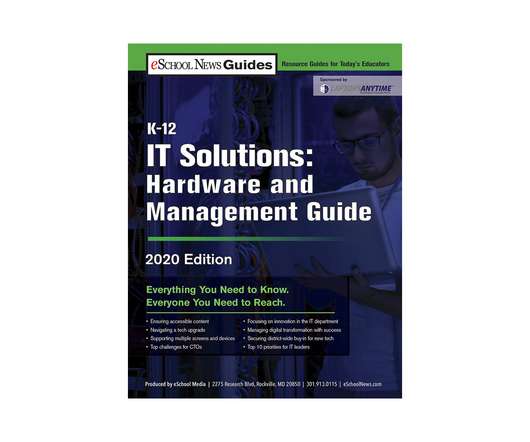State Leadership Working Towards Broadband Access for All
edWeb.net
MAY 1, 2019
If the workday of an adult typically requires seamless broadband access, then it’s reasonable that today’s students need the same access during their school day. After all, schools are preparing them for their future careers, which will include using some aspect of online technology.

























Let's personalize your content